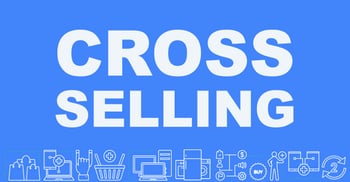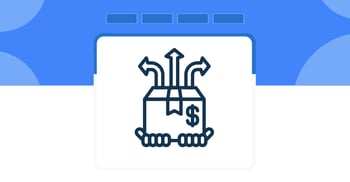Upselling vs. Cross-selling in SaaS, Software, and Gaming: Revenue Optimization with the Right Strategy

Maximizing client lifetime value is critical for long-term growth in the highly competitive digital product market. Upselling and cross-selling are two effective revenue-boosting techniques that are particularly important for software, video game, and SaaS companies seeking to increase average order value while enhancing customer satisfaction.
Despite the frequent confusion, these techniques have different implementation strategies and are most effective in particular situations. Global companies must carefully consider global payments, eCommerce compliance, and payment localization when implementing these strategies. A Merchant of Record (MoR) can assist in navigating these obstacles.
This article explains when, why, and how to utilize upselling and cross-selling strategies to optimize your conversion funnel and increase cross-border sales.
Understanding Upselling
What is Upselling?
Upselling is the process of encouraging clients to purchase a more expensive product, upgrade to a premium model, or buy product versions with additional features for digital enterprises.
Key Features of Upselling:
Aims to make a single purchase more valuable.
Provides enhanced features or high-end versions of the same product.
Highlights improved value by adding new features, functionalities, or service levels.
Usually increases the value of transactions without introducing new product categories.
The Pros of Upselling
- Increased average order value (AOV) with minimal additional marketing resources
- A higher CLV (client lifetime value)
- Improved client satisfaction when high-end features satisfy actual demands
- Reduced fulfillment costs compared to cross-selling (delivering a single type of product)
- Compared to cross-selling, reported conversion rates were 30% higher, per recent industry data.
The Cons of Upselling
- The possibility of creating purchase friction if viewed as overbearing
- Risk of cart abandonment if there is a significant pricing difference
- Need a strong case for the increased value.
- It may be limited by the client's financial constraints.
Ideal Use Cases:
SaaS upselling entails offering basic, professional, and enterprise subscription tiers
Standard and premium editions of video games, as well as season passes
Software that comes in premium, paid editions and feature-limited free versions
Products with characteristics that are easily divided into categories based on user complexity and needs
Examples:
- Adobe encourages users of Creative Cloud to switch from a single-app to an all-apps subscription.
- Shopify encourages merchants who outgrow their basic plan to upgrade to the advanced plan.
- Users of Microsoft 365 Personal can now access Microsoft 365 Family.
eCommerce Partner
Thrive with the industry's most innovative all-in-one SaaS & Digital Goods solution. From high-performing payment and analytics tools to complete tax management, as well as subscription & billing handling, PayPro Global is ready to scale your SaaS.
Sell your SaaS globally with PayPro Global!
Understanding Cross-selling
What is Cross-selling?
Recommending related or complementary products to customers based on their past or present purchase intent is known as cross-selling. Cross-selling involves introducing new products, rather than modifying or enhancing the existing selection, in contrast to upselling.
Key Features of Cross-selling:
Provide other items for the buyer to consider.
Emphasizes purchase broad rather than depth.
Produces ecosystems or product bundles.
Frequently introduces new categories by leveraging preexisting buying intent.
The Pros of Cross-selling
- Increases consumer knowledge of your product ecosystem
- Using complementary products raises the value of the entire cart.
- Improves user experience by offering relevant updates.
- Establishes several points of contact with the client
- Exposes customers to goods that they might not have otherwise found
The Cons of Upselling
- Can make the purchasing decision more difficult.
- Danger of losing emphasis on the main purchase.
- It could be necessary to integrate several services or products.
- Possibly increased acquisition costs for different products.
Ideal Use Cases:
Game companies that sell add-ons or DLC material
Software cross-selling - businesses providing supplementary resources (such as design software and a subscription to stock photos)
SaaS companies with supplementary apps within their network
Premium add-on modules with freemium products
Examples:
- Electronic Arts offering in-game currency packages when purchasing a new game
- Atlassian recommending Confluence to customers purchasing Jira
- Salesforce suggesting additional modules like Marketing Cloud to CRM customers
Up-selling Vs. Cross-selling: 3 Differences
- Implementation Effort: Upselling typically focuses on pricing strategy and clear value communication, requiring less technical integration. More advanced recommendation systems, product connection mapping, and even complex bundling criteria are necessary for cross-selling, particularly in foreign countries where product availability and laws may differ.
- Global Considerations: Both techniques encounter particular difficulties while conducting business abroad. Localized price points that preserve suitable value steps between levels across various economies are necessary for upselling. When selling multiple product categories together, cross-selling must consider regional product availability, bundling laws, and potentially complex tax implications.
- Mobile Optimization: Upselling must succinctly convey value differences in constrained screen real estate, and cross-selling must strike a balance between visibility of recommendations and the purchase flow.
Which One is Right for You? Choosing the Best Strategy
Your customer journey, product portfolio, and business model determine the right strategy. Think about these factors:
- Product Portfolio: Businesses with tiered offers may find upselling simpler, whereas those with a variety of complementary products usually gain more from cross-selling.
- Customer Acquisition Costs: Trying to cross-sell more products is rarely as effective as upselling current clients if your CAC is high.
- Development Resources: While upselling necessitates spending money on premium features, cross-selling calls for a number of products that are ready for the market.
- Global Market Presence: Managing several areas adds complexity that influences both methods in different ways. For example, upselling could necessitate tier structures tailored to a particular market, while cross-selling contends with varying product availability and regulatory issues.
- Business Model: Cross-selling at the point of sale often yields greater benefits for one-time purchase models, whereas upselling typically yields better outcomes for recurring billing businesses.
Ideal Use Cases:
For SaaS Companies: Your main tactic should be to upsell to higher subscription levels, with enterprise clients receiving focused cross-selling of complementary modules. As customers approach feature limits, analyze usage statistics to identify potential upgrade prospects and offer them timely upgrades.
For Video Game Creators: Use a hybrid strategy, upselling to premium editions for upcoming releases after first securing the first game purchase, and then cross-selling DLCs. Make season passes that upsell to a premium bundle of cross-sold content, combining the two tactics.
For Software Vendors: Prioritize upselling to professional or enterprise editions throughout the first purchase process. Once consumers have seen the value of the product, they should strategically cross-sell related technologies. Instead of trying to upsell every feature in a single premium package, cross-selling specialist add-ons for creative or productivity software frequently results in higher adoption rates.
For Freemium Models: Begin by offering targeted cross-selling of specific premium features to free customers based on their usage habits. After they have seen the benefits of using individual premium components, upsell to complete premium plans.
How a Merchant of Record Enhances Upselling and Cross-selling Globally
When conducting business in foreign countries, it becomes more difficult to use successful upselling and cross-selling tactics.
These revenue optimization strategies are supported by specialist infrastructure from a Merchant of Record (MoR) model such as PayPro Global, which offers:
- Localized Pricing and Payment Methods: By enabling advanced pricing localization for cross-sold items and upselling tiers, a MoR guarantees the best possible prices in every market and accommodates local payment preferences.
- Subscription Management: To determine the best upsell timing across various markets and client segments, a MoR offers payment data, prorated billing, and smooth upgrade routes for upselling within recurring billing models.
- Global Tax and eCommerce Compliance: An MoR automatically manages the complex tax ramifications of digital sales, such as VAT, GST, and sales tax across jurisdictions, when putting either strategy into practice abroad. This is especially crucial when cross-selling goods that might fall under different tax categories.
- A/B Testing Infrastructure: Top MoR providers have integrated testing tools to evaluate the effectiveness of various cross-selling and upselling tactics across geographies, aiding in the optimization of strategies for particular markets.
- Fraud Prevention: To safeguard revenue while preserving a flawless customer experience, sophisticated fraud screening is crucial when introducing more expensive upsells or intricate cross-sell bundles.
eCommerce Partner
Thrive with the industry's most innovative all-in-one SaaS & Digital Goods solution. From high-performing payment and analytics tools to complete tax management, as well as subscription & billing handling, PayPro Global is ready to scale your SaaS.
Sell your SaaS globally with PayPro Global!
Conclusion
Both cross-selling and upselling are effective tactics for digital product companies looking to increase sales and client value. Successful companies usually use both strategies at key stages of the customer journey, backed by data analytics to tailor offers and timing, rather than choose one over the other.
Working with a specialized Merchant of Record, such as PayPro Global, for global operations offers the technical infrastructure and eCommerce compliance know-how required to implement these strategies successfully in foreign markets. They will take care of the complex payment processing, subscription management, and regulatory compliance while you concentrate on developing attractive upgrade paths and additional products.
Software, video game, and SaaS companies can boost average order value, customer lifetime value, and growth in competitive markets by carefully putting these tactics into practice with the right global infrastructure.
FAQ
What exactly is upselling in software and SaaS?
Convincing clients to purchase a premium version with additional features or a higher-tier subscription is known as upselling in software and SaaS. By providing more features, such as switching from a Basic to a Pro plan, it seeks to maximize the value obtained from a single consumer.
What is cross-selling for digital products like games?
When it comes to digital products, cross-selling is suggesting complementary things in addition to the main purchase. With the goal of increasing sales and improving the main product experience, games frequently use DLCs, in-game cash, or expansion packs.
When should I focus on upselling my product?
When your products have built-in tiers or upgrade routes (such as Basic/Pro), concentrate on upselling. It maximizes value from potential consumers and works particularly well for SaaS or when customer acquisition expenses are high.
When is cross-selling the right strategy for my business?
Cross-selling is ideal when you have a range of complementary products that work well together. It helps customers discover more of your ecosystem, suitable for game developers with DLCs or software vendors with related tools.
Which strategy is better for a SaaS business model?
Because of the recurring revenue model, SaaS companies usually use upselling to higher subscription levels as their main tactic. One useful secondary strategy is to cross-sell related modules or add-on services.
How should game developers use upselling and cross-selling?
A hybrid strategy should be used by game producers to optimize revenue: cross-sell DLCs, in-game items, or related titles after a player has made a purchase or while playing, and upsell to premium editions or season passes at launch.
Can I use both upselling and cross-selling together?
Yes, employing both tactics is often preferable. Depending on user behavior and demands, apply them at various points in the customer journey. Use data to identify the best times and deals.
Ioana Grigorescu
Ioana Grigorescu is PayPro Global's Content Manager, focused on creating strategic writing pieces for SaaS, B2B, and technology companies. With a background that combines Languages and Translation Studies with Political Sciences, she's skilled in analyzing, creating, and communicating impactful content. She excels at developing content strategies, producing diverse marketing materials, and ensuring content effectiveness. Beyond her work, she enjoys exploring design with Figma.
-
1.Explore PayPro Global's Solutions: See how our platform can help you streamline your payment processing and boost revenue.
-
2.Get a Free Consultation: Discuss your specific needs with our experts and discover how we can tailor a solution for you.
-
3.Download our Free Resources: Access valuable guides, checklists, and templates to optimize your online sales.
-
4.Become a Partner: Expand your business by offering PayPro Global's solutions to your clients.
- Cross-selling encourages product adoption by suggesting related products, whereas upselling raises the value of a single transaction by providing improved features.
- Your product range, customer acquisition expenses, and company plan will all influence your decision between upselling and cross-selling.
- With localized pricing, tax compliance, and recurring billing, a Merchant of Record simplifies international upselling and cross-selling.
Get the latest news



